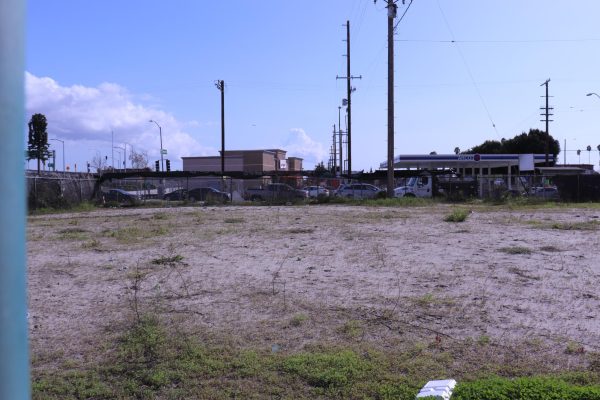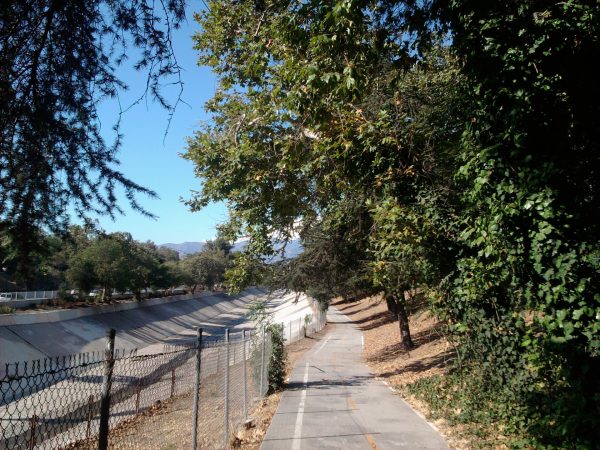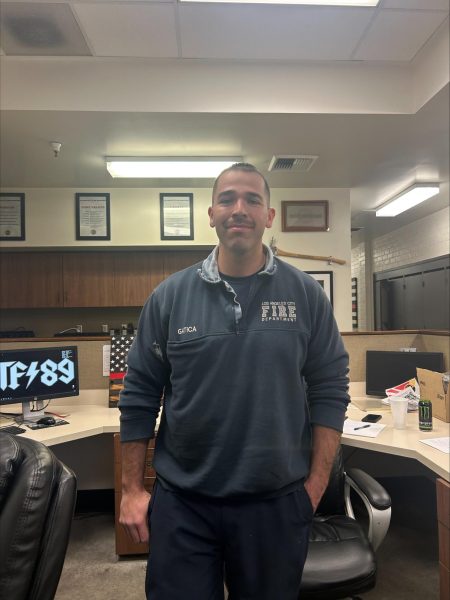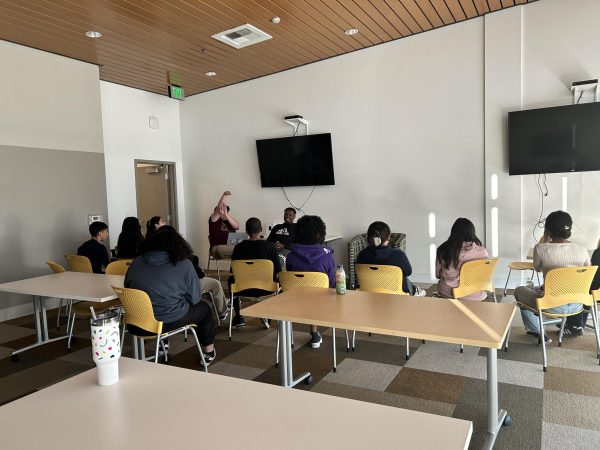The fiery state of California
Courtesy of California Department of Forestry and Fire Protection
A Cal Fire helicopter flies above a fire.
It is easy to imagine a friendly fireman climbing a ladder to rescue a cat off of a tree, but the reality is firefighters respond to more urgent emergencies — especially in California where the fires are getting bigger by the year.
“You never get used to it,” Michael Thomas, a 36-year Los Angeles Fire Department firefighter who became a Cal State LA professor after retiring. “But you do learn to adapt a professional and clinical demeanor.”
Thomas recalls early in his career when he had to perform CPR on a young woman that was shot in her head.
But not all days are tough, and Thomas calls his career fulfilling and a “great ride.”
During his career, Thomas responded to calls ranging from cardiac arrests, suicides, structure fires, fatalities, and more but points to wildland firefighting becoming a year-round proposition.
In 2020, four of the largest national wildfires happened in California, destroying millions of properties and endangering residential areas.
California’s Fire Season for 2021 and 2022 have been a little bit better than what the season in 2020 was like. In 2021, the fire season in California had a lot more fires than in the previous five years but the fires were not as big as the ones in 2020, according to Cal Fire’s website.
Last year, in August, the state faced “unprecedented fire conditions” with multiple fires raging at once including the McFarland Fire, Caldor Fire, and Dixie Fire, which burned for three months on 900,000 acres of land, according to Cal Fire.
Luckily this year, the rain came early in California, reducing wildfires from breaking out as much. In 2022 so far, Cal Fire reports over 300,000 acres have been destroyed — down from 2 million acres in 2021, and over 7,000 incidents happened, down from 8,000 the year before.
There have been nine fatalities from the fires, up from just three last year, and over 800 structures were destroyed, down from 3,000 last year.
Days with weather conducive to fires — with higher temperatures and winds combined with low humidity — is predicted to increase by 40% in the year of 2065, according to research cited in a 2020 ProPublica article. On these days, “a small fire can grow into an inferno” very quickly, according to the story.
“They can be hazardous in a number of ways,” said Thomas, adding that air quality can be affected by these fires as can the health of people living near the fires.
“Red Flag Day” is when citizens can’t park on certain streets and especially in the wildland area due to the firefighters needing to get up to these certain streets to fight the fires that are caused by the winds, the high temperatures, the low humidity, and the low fuel moisture.
Wind-driven fires and spot fires are two types of fires. A wind-driven fire is a rapid fire progression caused by wind, while a spot fire occurs when embers hit the unburned side of a fireline.
“It is a big threat in Southern California and Northern California,” said Thomas. “A wind-driven fire is probably the most challenging type of fire to get your arms around.”
A couple of strategies to fighting fires, according to Thomas, is to attack the initial area where the fire started or attack from the outer side.
Planning and strategizing is key. Robert Foxworthy, a Sacramento area firefighter who is now a Cal Fire spokesman, said: “Our initial attack strategy is to stop 95% of fires at 10 acres or less.”











